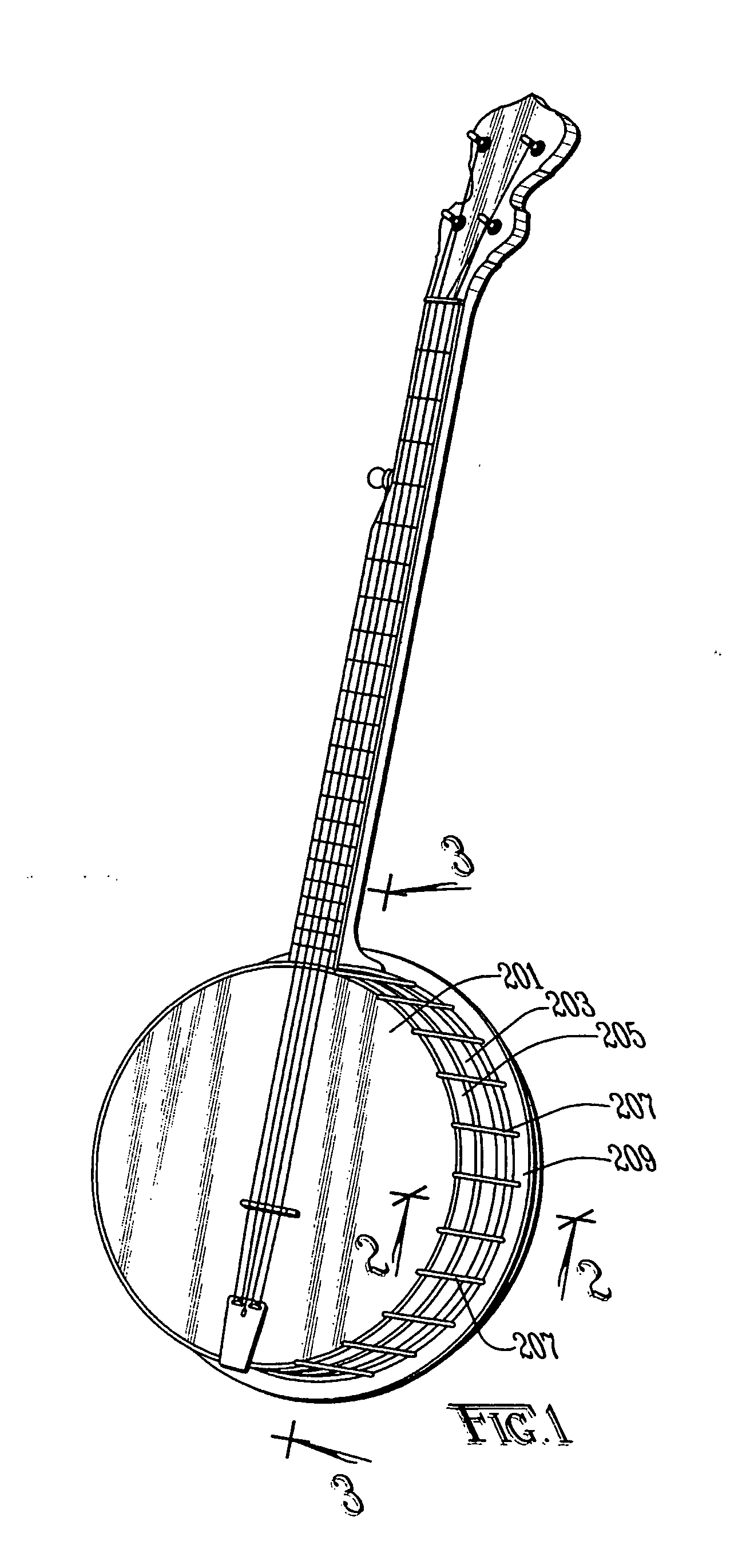Banjo tensioner
a tensioner and banjo technology, applied in the field of banjo tensioners, can solve the problems of the change in the tension of the banjo head and the sound quality produced by the banjo head, and achieve the effects of lowering the frequency of adjustments, reducing tone quality, and even tension
- Summary
- Abstract
- Description
- Claims
- Application Information
AI Technical Summary
Benefits of technology
Problems solved by technology
Method used
Image
Examples
Embodiment Construction
[0017] Experimental testing has demonstrated that a tension range between 48 and 55 pounds is desirable for the nuts securing the hooks of most banjos. The inventor first determined the torque required on the nuts to maintain the desirable tension range, and then tested various sizes and properties of wave springs to determine which size would utilize approximately half of the wave spring's total available travel at the desired torque reading. For the first preferred embodiment of the present invention the inventor selected a wave spring with enough strength and travel to maintain a tension range on the nuts between 45 and 60 pounds. A wave spring capable of maintaining the proper tension has a travel of approximately 0.020 inches, which yields a total travel potential for the head of 0.040 inches. For most banjo applications, this configuration gives the banjo player optimum consistency in the tension of the banjo head.
[0018] For the top coordinator rod nut, testing has shown that...
PUM
 Login to View More
Login to View More Abstract
Description
Claims
Application Information
 Login to View More
Login to View More - R&D
- Intellectual Property
- Life Sciences
- Materials
- Tech Scout
- Unparalleled Data Quality
- Higher Quality Content
- 60% Fewer Hallucinations
Browse by: Latest US Patents, China's latest patents, Technical Efficacy Thesaurus, Application Domain, Technology Topic, Popular Technical Reports.
© 2025 PatSnap. All rights reserved.Legal|Privacy policy|Modern Slavery Act Transparency Statement|Sitemap|About US| Contact US: help@patsnap.com



